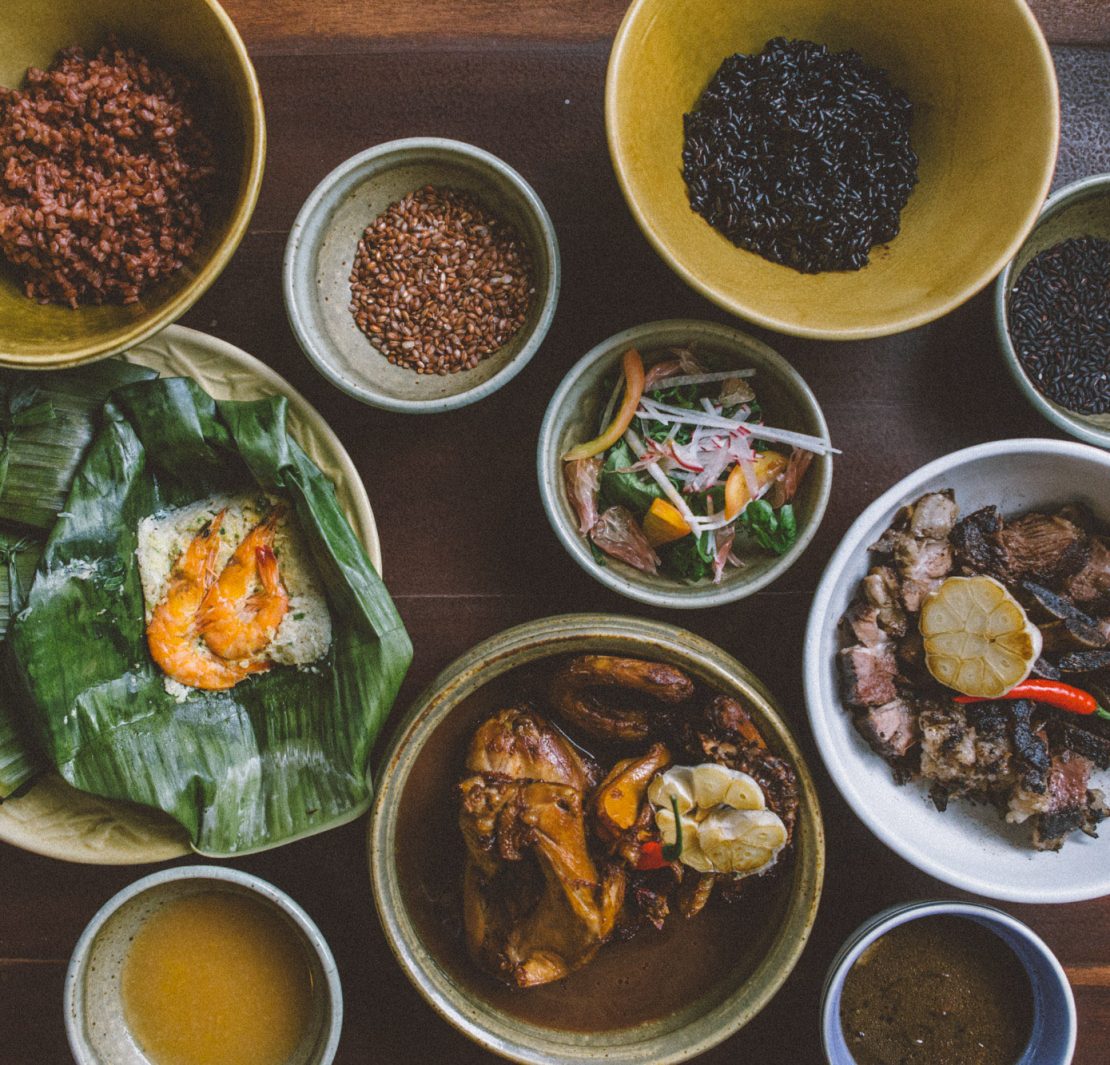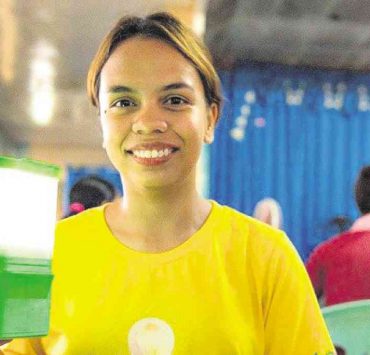Filipinos are known to be naturally creative. Sometimes we channel this creativity in funny ways. Occasionally, it’s in things that are unproductive (but still nevertheless funny). And in others, it’s channeled into progressive pursuits. But if there’s one field that Filipinos seem to be particularly creative at, it’s food.
The value of the value meal

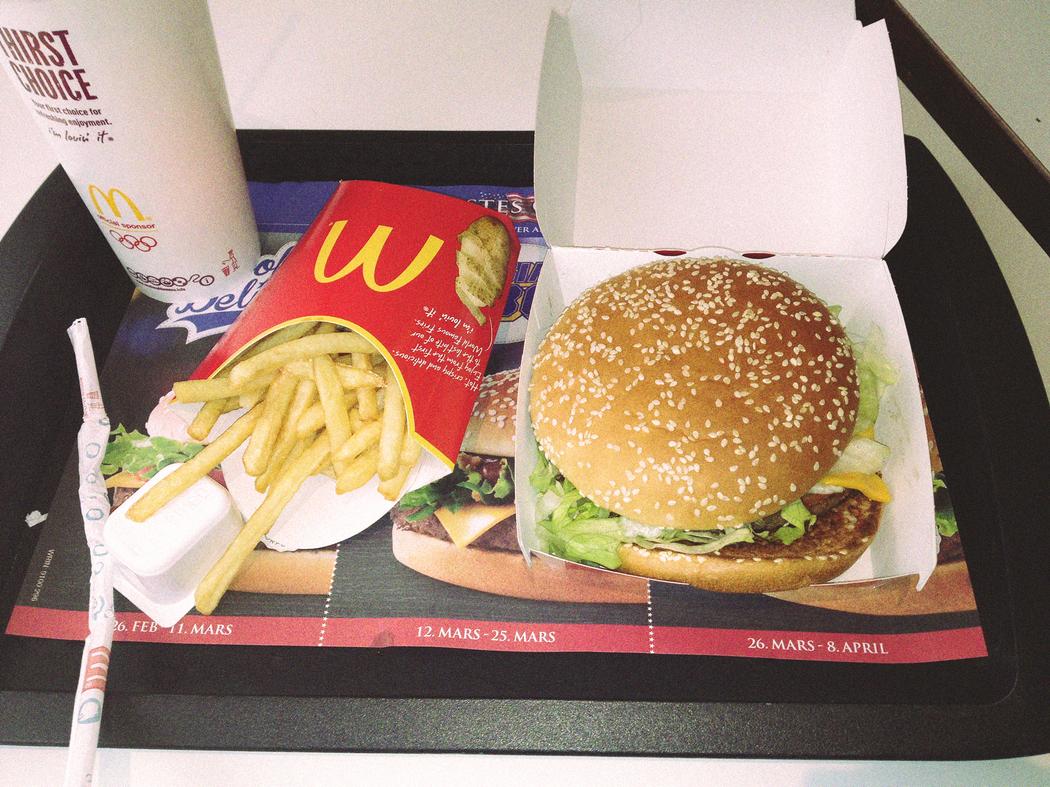
In 1991, an immigrant from the Philippines set to—unwittingly—change the face of fast food chain McDonald’s not just in the United States, but all over the world. It was a change born out of a bit of healthy competition, really: Alan Dimayuga, the immigrant manager of a McDonald’s in San Francisco’s Bay Area, came up with strategies to beat the sales records of a branch in Los Angeles.
Dimayuga told this story to his daughter, Mission Chinese Food’s current executive chef, Angela Dimayuga. She recounts her father’s story on Munchies:
The McDonald’s golden arches on high poles, towering over houses and buildings? His idea. Menu boards in the drive-thru line? His idea as well. But the best and most pervasive of all, was the idea of having an extra value meal—putting together different parts of the menu, for example, a cheeseburger, fries, and a Coke, slapping on a number so it’s easier to remember and encode, and even eventually selling such a “meal” at a lower price.
Although he initially drew criticism from his bosses for it, the numbers he produced told another story. Those numbers spelled efficiency for the store’s crew, and it meant a better-packaged meal for the diner, too. It was thanks to having the sense of customer satisfaction and service, along with the impressive sales numbers, that the extra value meal is now a permanent part of McDonald’s—and many other fast food restaurants’—menus worldwide.
One of New York’s most promising chefs
Like many of our best recipes, it seems culinary acuity can also be passed down through generations.
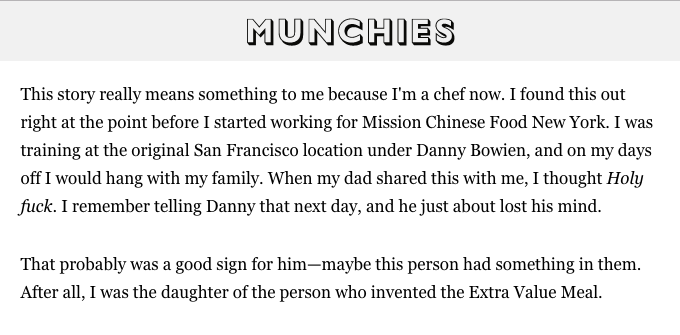
Aside from heading Mission Chinese Food New York, Angela has been making waves in the American culinary scene with her collaborations and work. Last May, she catered the Creative Time gala. She’s also teamed up with conceptual artist Anicka Yi for an art-food collaboration that will appear in A Magazine Curated By’s September issue.
From “Americanized Oriental”, Angela has brought Mission Chinese to several new incarnations. First, there was “weirdo-Szechuan” food and fusion. Now, with the incorporation of more than just Szechuan food—now including Filipino, Korean, Japanese, Indian, Hawaiian, and even Moroccan elements—Mission Chinese has come to be called New American Food.
Her work has led her to be recognized by Grub Street as one of 2015’s best new chefs, and she’s even gotten the attention of IvankaTrump.com—to which she declined being featured. “As a queer person of color and daughter of immigrant parents I am not interested in being profiled as an aspirational figure for those that support a brand and President that slyly disparages female empowerment,” she said in reply to one of the website’s writers.
Preservation through “marketing”
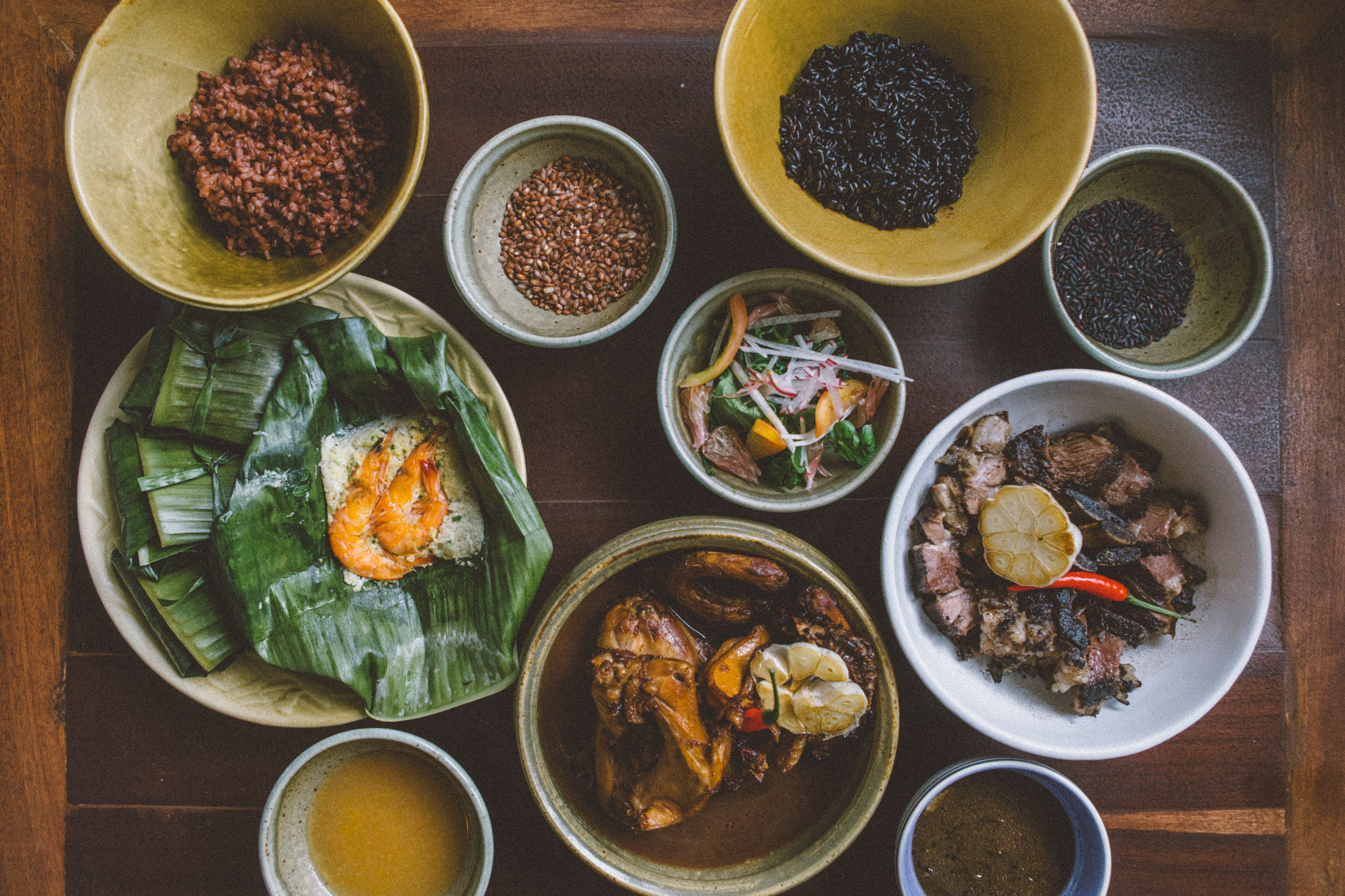
Filipinos have shown that they have a knack for the culinary and the enterprising in ways that now benefit our own culinary heritage. Amy Besa of New York’s Purple Yam, for example, promotes the heirloom and organic movement: “The mantra was, you have to eat it to preserve it. I said, ‘That makes sense, because if you eat it, then you buy it. And if you buy it, whoever makes it or grows it will have income and it will have a commercial value. The markets will respond and suppliers will also respond. So if you don’t eat it, you don’t buy it, why would someone grow it?’” says Besa in an interview with Northern Living in 2014.
Elevating the community “hub” into a culinary concept
Looking back at one’s roots gives one not only a better appreciation of it but also serves as an inspiration to create something new. This is evident in all the new concepts that choose to highlight heritage cuisine and culture, like the LA Grand Central Market stall, Sari Sari Store.
Sari Sari takes the humble corner store—what one may consider an icon of the average Filipino neighborhood—and turns it into something more than just the go-to spot when you need a packet of vinegar, or you’re craving for chips and an ice bag filled with soda. The community hub merges with a culinary concept, serving up not only Filipino food but a glimpse of Filipino community culture as well.
A salu-salo that crossed states
For a food culture that is decidedly different and difficult to define, it seems the best way to share it with a people unfamiliar with it is to give them an authentic, first-hand experience. This goes beyond simply opening up a restaurant carrying that particular cuisine. Sometimes, as in the case of Filipino cuisine, a more intimate, personal sharing is required. This is what Yana Gilbuena did on her 50-week journey across the United States: Organizing pop-up dinners featuring traditional Filipino food, made using locally available produce and spices, and served the traditional way—on banana leaves, and eaten with the hands.
If anything, the food tour proved that knowing, understanding, and appreciating a cuisine relied not only on taste but on the experience. And more specifically, it highlighted how communal the Filipino cuisine—and the culture itself—was.
Adapting to change
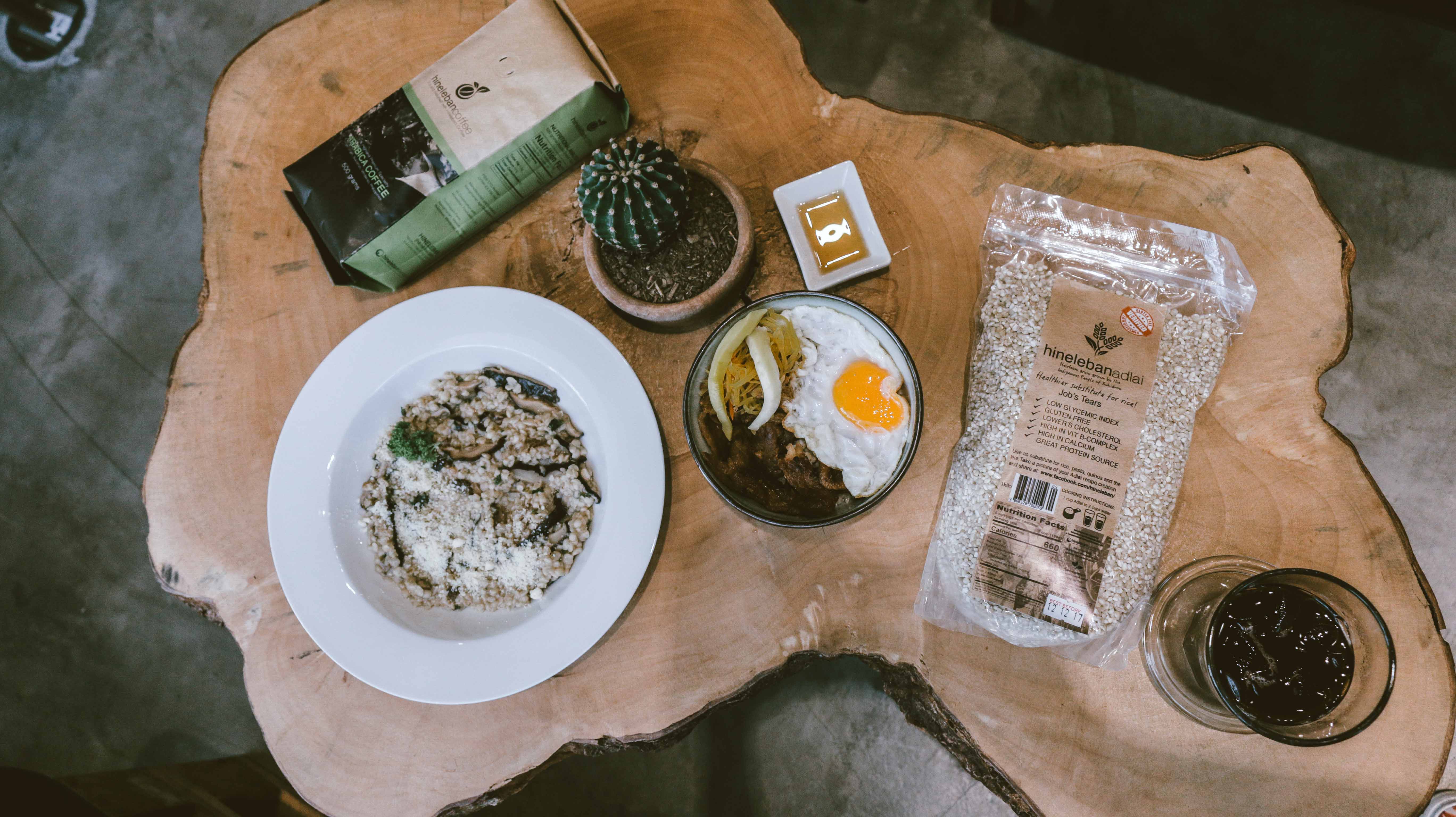
But if there’s anything else the Filipino could be known for, it’s the skill of adapting to change. Take the Hineleban Foundation’s discovery of adlai, for example. When a long drought hit their land in Bukidnon, the locals found another crop to eat in exchange for rice and other crops. Adlai, the grain they had found, is now grown, harvested, and used not just as a mere substitute. It has been studied and developed, and now more people know it’s healthier, and that it can be eaten along with dishes we usually pair with rice.
It’s no longer surprising that Filipinos are still constantly coming up with new ways to either promote the cuisine or to develop it even further. At this point, it’s probably safe to say that all this—the desire to create a better dining experience, to find more ways to cook and eat what’s locally available, and to share it to more people—is just part of who we are.
Read more:
Feel good food goes beyond taste at Hineleban Café
NY-born Filipino restaurant comes home
LOOK: There’s a Sari Sari Store in Los Angeles
How chef Yana Gilbuena taught Americans to eat with bare hands
Writer: PAULINE MIRANDA


